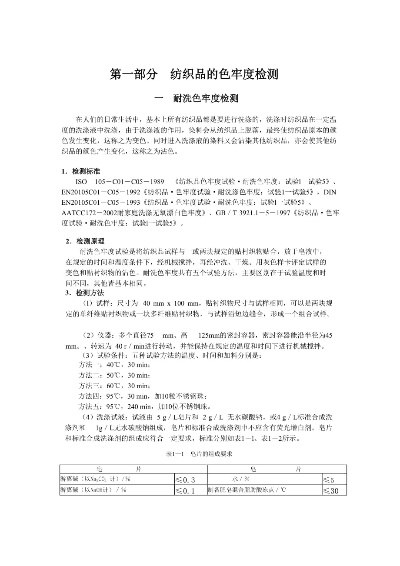Handling and Preventing Mold Growth in Textiles
Mold growth in textiles is a common issue that can lead to damage and degradation of the fabric. To handle and prevent mold growth, it is important to understand the factors that contribute to its development, such as high moisture levels, poor ventilation, and temperature fluctuations. One effective method is to use anti-mold agents or preservatives, which can be applied directly to the fabric or incorporated into the dyeing process. Additionally, proper storage conditions, such as low humidity and temperature, can help prevent mold growth. Finally, regular inspection and maintenance of textiles can help identify and address any potential mold issues early on, reducing the risk of damage and extending the lifespan of the fabric.
In the world of textiles, mold growth can be a major issue that affects not only the aesthetic appeal of the fabric but also its durability and safety for wearers. To address this concern, it is essential to understand the causes of mold development and implement effective strategies for prevention and treatment. In this guide, we will explore the different ways to tackle mold growth in textiles and provide practical examples to illustrate the importance of regular maintenance and proper storage practices.
Mold growth occurs when moisture or humidity is present in an environment where fungi can thrive. This can happen due to various reasons such as improper drying of fabrics, exposure to high levels of humidity, or poor ventilation. Once mold starts to grow, it can spread rapidly and cause damage to the fabric, potentially leading to health issues for those who come into contact with it.
To prevent mold from forming in textiles, it is crucial to maintain a dry and well-ventilated environment. Regularly inspect your textiles for signs of moisture or dampness and ensure they are stored in a cool, dry place away from direct sunlight and heat sources. Additionally, using airtight containers or bags when storing fabrics can help reduce moisture buildup and prevent mold growth.

If you have already experienced mold growth on your textiles, it's important to take action immediately. Here are some steps you can take to remove the mold and restore the fabric to its original condition:
-
Identify the source of the mold: Before attempting any cleaning, it's essential to determine where the mold is coming from. This can be done by examining the fabric closely for any visible spots or discoloration.
-
Remove affected areas: Use a clean cloth or brush to gently scrape off any visible mold from the fabric. Be careful not to damage the fabric further.
-
Clean the affected area: Mix a solution of mild soap and warm water to create a cleaning solution. Apply the solution to the affected area and let it sit for a few minutes before scrubbing gently with a soft brush. Rinse the area thoroughly with cold water and dry it with a clean cloth.
-
Repeat if necessary: If the mold is still visible after cleaning, repeat the process until all traces are gone. You may need to do this several times to completely remove the mold.
-
Test for mold regrowth: After cleaning, test the fabric for any remaining mold by placing it in a sealed container and leaving it at room temperature for a few days. If mold returns, repeat the cleaning process.
-
Prevent future mold growth: To prevent mold from forming again, store your textiles properly and regularly check them for signs of moisture or dampness. Use airtight containers or bags whenever possible.
Here is an example table to illustrate the steps mentioned above:
| Step | Action | Result |
|---|---|---|
| Identify the source of the mold | Examine the fabric for visible spots or discoloration | Remove visible mold |
| Remove affected areas | Scrape off visible mold using a cloth or brush | Clean affected area |
| Clean the affected area | Mix a solution of mild soap and warm water | Test for mold regrowth |
| Repeat if necessary | Reapply cleaning solution and scrub gently | Complete removal of mold |
| Test for mold regrowth | Store fabric in sealed container for a few days | Prevent future mold growth |
In conclusion, preventing mold growth in textiles requires a combination of proper storage practices, regular inspections, and timely cleaning when necessary. By following these steps and implementing a preventative approach, you can keep your textiles looking their best and ensuring that they remain safe and comfortable for everyone who wears them. Remember, small steps towards good hygiene can go a long way in maintaining a healthy living space.
Dear friend,
关于纺织品发霉的问题,我们确实需要采取一些措施来解决,下面我将用简洁明了的方式为您介绍几种有效的处理方法。

发霉原因及预防措施
纺织品发霉的原因可能有很多,比如潮湿环境、存储不当、使用不当洗涤剂等,为了预防发霉,我们可以采取以下措施:
- 保持干燥通风:确保存放环境干燥通风,避免潮湿。
- 定期检查并清理:定期检查纺织品,及时处理霉变部分。
- 选择合适的洗涤剂:使用适合纺织品材质和洗涤条件的洗涤剂。
发霉处理步骤
-
观察和处理初期霉变区域
- 使用吸尘器或软刷轻轻清理发霉区域。
- 如果发现霉菌数量较多或范围较大,可以寻求专业的清洁服务。
-
使用专业清洁剂或消毒液
- 根据纺织品材质选择合适的清洁剂或消毒液。
- 按照清洁剂或消毒液的说明书进行操作,注意使用适量。
- 注意清洁剂的浓度和温度,避免对纺织品造成损害。
-
晾晒或烘干处理
- 对于已经清理干净且没有明显损坏的纺织品,可以采取晾晒或烘干的方式进行消毒。
- 注意晾晒或烘干的时间和温度,避免过度烘干导致纺织品变形或损坏。
案例分析
下面是一个具体的案例分析,以帮助我们更好地理解和应对纺织品发霉问题:
衣物发霉的处理 假设某顾客买了一件棉质衬衫,发现发霉了,我们可以采取以下步骤进行处理:
- 观察:发现衬衫有明显的霉斑。
- 处理初期:使用吸尘器清理霉变区域,并使用专业的清洁剂进行初步清洁。
- 晾晒或烘干:如果霉菌数量较少且不影响穿着,可以选择晾晒;如果需要进一步消毒,可以采取烘干的方式进行消毒。
总结与建议
对于纺织品发霉的问题,我们可以通过保持干燥通风、定期检查并清理、选择合适的洗涤剂以及使用专业清洁剂或消毒液等方法进行处理,我们也应该注意选择合适的处理方法,避免过度处理对纺织品造成损害,我们还可以通过案例分析来更好地理解和应对纺织品发霉问题,希望这些信息能够帮助您解决纺织品发霉的问题。
Articles related to the knowledge points of this article:
Textile Classification,Components,and Care
The Transformative Journey of Guangdong Hanbo Textiles Company
The Study of Textile Dry Strength Breaking Power
Exploring the Evolution of Shaoxing Rus Textile Industry
The Story of a Textile Merchant in the Wenjiang Family Business



